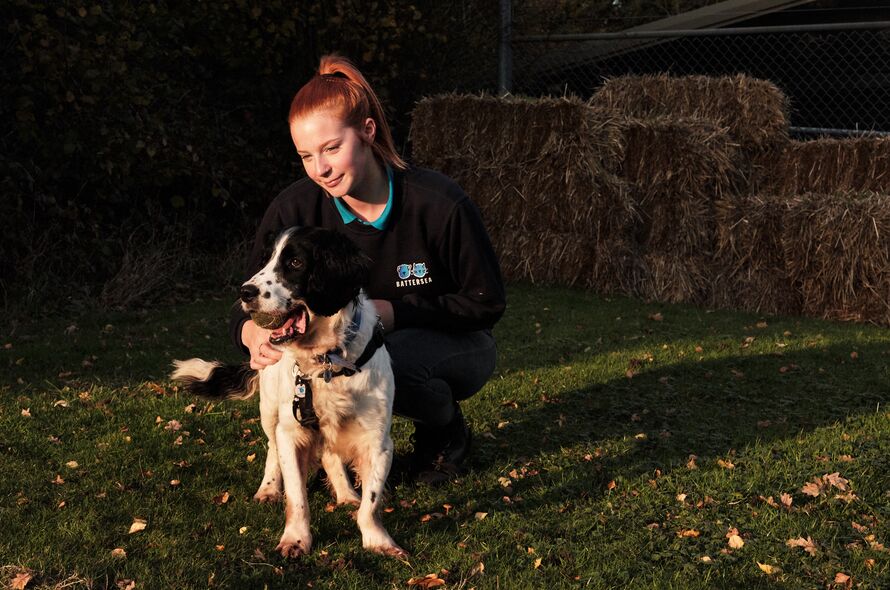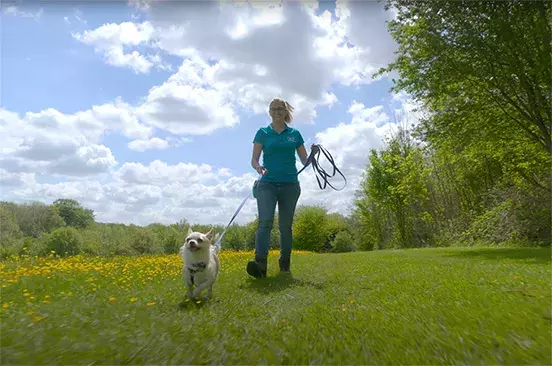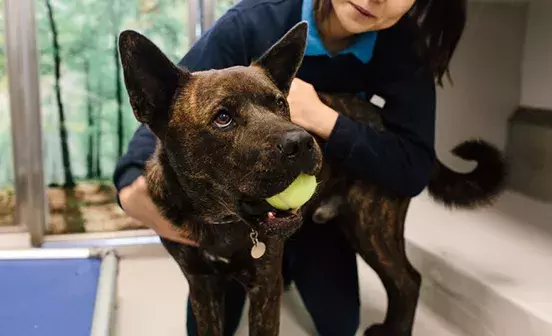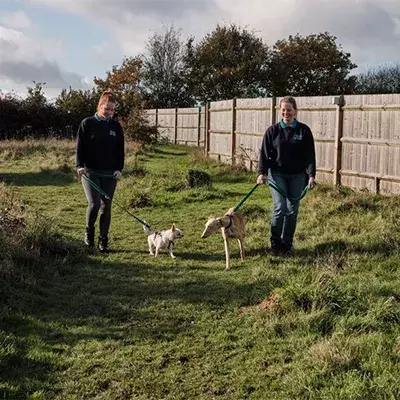Recall, or teaching your dog to come back when called, is one of the most important behaviours you can teach. It’s essential that all dogs have a strong and reliable recall before being let off the lead in a public place. A strong recall means that you will be able to get their lead back on with ease, and if necessary, take control of a situation and remove them before a situation becomes dangerous.

The key to this training is to stay positive and make sure that the prospect of returning to you is always appealing for your dog. If they associate the recall with their lead going back on and the fun ending, or if you become visibly frustrated at them for ignoring you, they understandably won’t want to come back.
Take a look at our video on teaching your dog a recall, or check out the steps written out below
Step 1 – Getting started
To begin with, you will need to start this training in a secure area in your house or garden, where your dog is comfortable and doesn't have too many distractions. If you don’t have access to a safe, enclosed area at home, you can use a long-line training lead with a harness in a quiet area of a park. Make sure that you keep an eye out for people and other dogs and stop frequently to call your dog back to you.
First, you will need to work out what type of reward motivates your dog the most. For many dogs, it’s food. However, when they’re excited and running around, they may prefer to come back for a game with a particular toy.
Whatever the reward, it should be something your dog really wants, and something that is special, that they don’t get all the time, or ideally that you only use for recall.
Step 2 – Introduce the cue word
Begin by teaching your dog your chosen cue word for the recall. This could be, ‘Come’, ‘Here’, or you can even use a whistle, just make sure you choose your word and stick to it.
To introduce the word, stand near your dog and call them to you with lots of enthusiasm, using your chosen cue word and their name. When they come to you, give them a treat, or play with a toy for just a few seconds before stopping and moving away. Keep repeating this throughout the day, around your house, and your garden if you have one, until you’re happy that your dog understands the word. Once you’re happy they understand, try calling them when they’re in different area of the house. Making sure you reward them as soon as they appear.
Step 3 – Practice, practice, practice
Keep practicing the recall as much as possible, at home and in your garden, if you have one. Your dog needs be reliably coming back to you before you progress to adding distractions or trying this outside of your home.
If you find your dog isn’t reliably coming back, it’s because they either don’t understand the cue yet, or the reward you are offering isn’t motivating enough. Go back to the beginning and be patient, it will be worth it.
Step 4 – Introduce distractions
Once your dog is happy with the cue word and is responding to it from different distances, you can start to introduce distractions. We would recommend asking a friend or family member to help you out with this.
Set up a situation with one person engaging your dog, either by playing with them or doing some different training, while the other person is somewhere nearby. When you’re ready, stop the distraction and have the second person call your dog, and reward them as soon as they respond. The second person will need to entice them with another equally fun toy or treat. Practice this back and forth a few times, over a few short sessions. Make sure that the person calling your dog away is always more appealing than whatever they are currently doing. This will show them that recall doesn’t mean the end of fun.
Step 5 – Work up to practising on walks
Once your dog is confident with being recalled from one fun, engaging thing to another, you can start to practice during their walks. We’d recommend using a long-line lead and a harness whilst they’re still learning.
To begin with, try to only call them at times when you think they’re going to come back to you, so not when they are playing with another dog or intently sniffing something. You can build up to these situations and bigger distractions as they improve.
When they come back, collect the long-line lead up, lure them into you and hold their collar or harness as you reward them. It’s important to practice this throughout the walk, and not only at the end when the walk is over.
If they’re struggling with this, try gently reeling them in using the long-line, calling them as you do it and then rewarding them.



